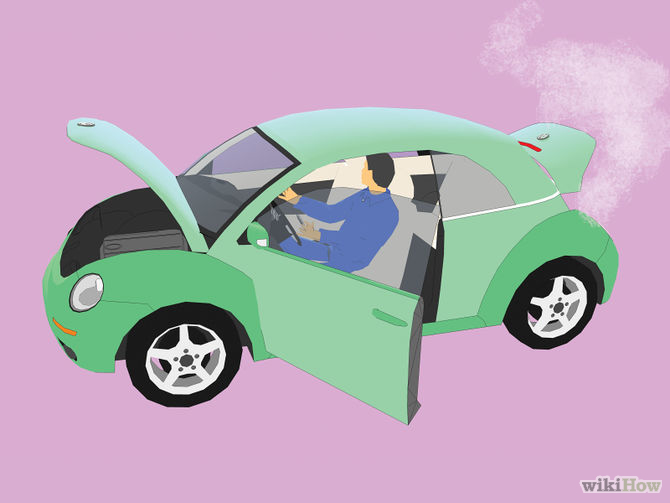Here’s some recommended maintenance for VW Beetle and Karmann Ghia or other air-cooled Volkswagens. If you’re new to the old VWs this is good overview of basic things you really should do if you want to keep your VW going.
Steps
1. Remove large chunks of dirt and dry mud from underside of car body and chassis and check for rust. Fix rusted area and coat with top grade primer or lead-based primer and paint, or coat with fiberglass resin. Mud is usually trapped under the fender wells on the upper light domes, fender ends, and on the Super Beetle, the top area of the front coil shock springs.
2. Pull tar-paper rug off floor to expose the sheet metal floor pan. Clean and coat rusted area of floor pan with top grade primer or lead-base paint. This is very important especially the rear floors and battery area. Replace tar paper rug with rubber mats (spike side of mat down.) Note: 72 VW Beetles and later models had no tar paper rugs.
3. On VW Beetle, remove running boards (both L and R side) and clean/repair body attachment area and running boards. Coat body attachment area and metal part of running boards with fiberglass resin, and use a thin layer of fiberglass with resin at rust damaged areas. File and sand smooth all resin/fiberglass work.
4. Change fuel hose just under fuel tank, and forward of engine firewall, and at fuel pump area. Use new original VW hoses or 3/16 diameter braided fuel hoses for replacement.
5. Check fuel tank at lower area for fuel leaks.
6. Change transmission oil, and change engine oil.
7. Adjust engine valves, points, and timing.
8. Grease front wheel bearings, and grease front chassis.
9. Remove front wheel bearings, and grease front chassis.
10. Remove dirt from all four c v joints (constant velocity joints) at rear wheels (on ’68 automatic and ’69 and later VWs.) Disassemble and pack all four c v joints with molybdenum disulphide lithium grease. Rotate the c v joints by installing the previous wheel c v joint to the inside transmission flanges, and installing the previous transmission c v joints to the outside wheel flanges.
11. Check brake line at foot pedal area for rust and fluid leaks. Coat brake line in this area with Rustoleum or lead-base primer and paint.
12. Jack front of car to free front wheel rotation. Apply the brakes and have an assistant outside try to rotate the front left and right wheels. If one (or both) front wheel still rotates when the brakes are applied, check for faulty brake hose, brake cylinder or caliper, master cylinder, rubber grommet on Master cylinder where brake fluid enters for cracking or leakage, or brake shoes and linings. Apply (with force) and release brake and then check again for free rotation of front wheels. If one (or both) front wheels do not rotate freely, check for faulty brake hose, brake cylinder of caliper. NOTE: brake hose deteriorates from the inside and may look perfectly good on the outside.
13. Repeat above brake procedure to rear wheels.
14. Checking the brakes in this manner is the most important thing to do before driving the car. It assures the engine is not overstressed (lugged down,) and will not overheat due to faulty brakes. The engine will last longer and the car will get better gas mileage.
15. A driver can not always detect when the car brakes are dragging. Therefore, the brake procedure should also be performed when: the gas mileage drops; the car does not roll freely (coast) on the road, especially after releasing brakes; a wheel drum overheats, or smelling of burning brake shoes.

How to Maintain an Air Cooled Vw (Volkswagen)
by
Tags:

Leave a Reply